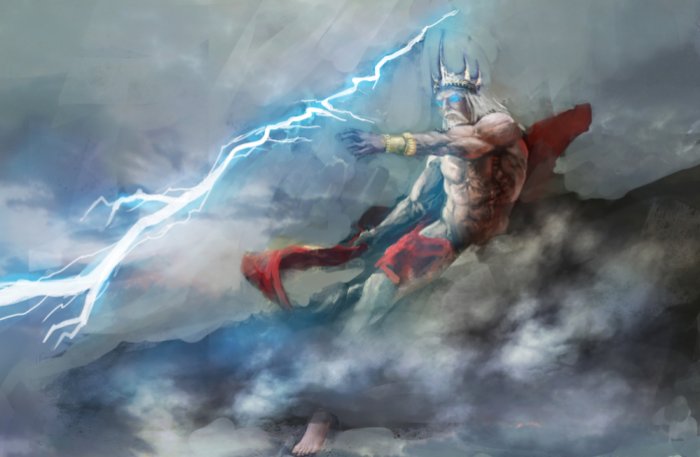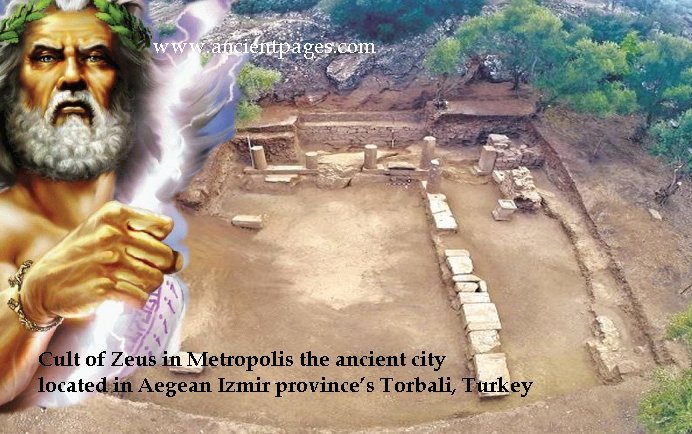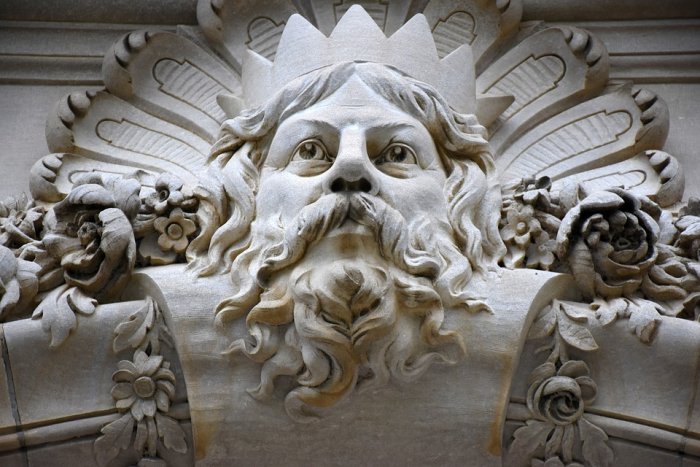Zeus – ‘Cloud Collector’, God Of Order, Law And Justice – Most Powerful God Of Olympian Pantheon
A. Sutherland - AncientPages.com - In Greek mythology, Zeus is the God of heaven and the father of Mount Olympus gods; his Roman mythology counterpart is Jupiter.
Zeus’ Powerful Name
The name “Zeus” originates from the Indo-European deiwo-s and binds the sky, brightness, and light. Zeus was also called the brilliant ("Lykaios") and ruled over the sky; everything was included.
God Zeus. Image: Stock photo
Zeus had many other nicknames such as Ksenios (patron of hospitality (xenia) and guests), Katachtonios (Underground), Basileus (or King), Soter (or Savior), Ktesjos, which binds him with prosperity, and many more.
Birth Of Zeus And His Foster Mother, Amalthea
Zeus came into the world from Cronus and Rhea's relationship. He was the youngest of six children. Cronus swallowed his siblings as soon as they were born since he was told about the prophecy that he was destined to be abandoned by his son as he had previously overthrown Uranus, his father.
This prophecy was dangerous, and Rhea wanted very much to avert it. When Zeus was about to be born, Rhea sought Gaia to prepare a plan to save her child so that Cronus would get his retribution for his acts against Uranus and his children. Finally, Rhea gave birth to Zeus in Crete, while Cronus received only a rock wrapped in swaddling clothes, which he promptly swallowed.
Depending on the version of his story, Zeus was raised by a nymph named Amalthea (sometimes presented as a goat) in a cave called Dictaeon Antron (Psychro Cave). Since Cronus ruled over the Earth, the heavens, and the sea, Amalthea (foster mother) hid the little boy by dangling him on a rope from a tree so he was suspended between earth, sea, and sky. It made him invisible to his father.
The Ideon Cave (or Cave of Zeus) is located on Mt Ida, the highest mountain in Crete. It flourished in antiquity (4000 BC to the 1st century AD). The Ideon Cave was famous for being the place where Zeus, the Father of the Gods, was born and grew up. Image credit: Tomisti - CC BY-SA 4.0
Additionally, she organized a company of soldiers, the Kuretes (or Kouretes), who were ordered to shout, dance, and clash their spears against their shields near the cave so that Cronus would not hear Zeus’ cry.
Zeus’ Wives And Infamous Erotic Escapades
Zeus had three wives: Metis ('skill' (or 'cunning intelligence'), who was also his cousin; she helped him to defeat his father Cronus; next, Zeus married Themis ('right'), the goddess of fixed order and divine right and through this marriage, he could stabilize his position overall gods and men alike. Here was his third wife, and his children with her were Ares, Hebe, Hephaestus, Eileithyia, Angelos, and Eris.
Zeus was notorious for his erotic escapades and is known to have many children apart from those Hera bore for him.
The most famous places in the Zeus cult are Ideon on Mt Ida, Dodona, and Delphi, which are considered the center of the world, as represented by the stone monument known as the Omphalos of Delphi and Crete.
In Arcadia, there was a cult of Zeus Likejos (or ‘Wolf’), and people were sacrificed to him. Those who participated in this sacrifice would eat human flesh.
Zeus contributed with many divine, semi-divine, and mortal offspring.
According to legends, the participants of this cult turned into wolves for eight years. In the ninth year, they regained human form. However, there was one condition. Throughout this time, when they were in a bold form, they could not taste human meat. Otherwise, they would remain changed forever.
Appearance And Attributes Of Zeus
Zeus was usually presented as an older man with a long beard. Zeus's attributes include being a bull, an eagle, an oak tree, and a formidable thunderbolt created for him by the Cyclopes when he released them from Tartarus.
Sculpture of Zeus. Image credit: Public Domain
Most frequent bronze figurines depict Zeus seated in majesty or standing, striding forward with a thunderbolt leveled in his raised right hand. These artifacts widely emerged at Olympia and many other places in Greece during the archaic and early classical periods.
Zeus could appear in a different form, such as a golden, life-giving rain falling on Danae, in the form of a bull when he abducted Europe (Europa). In Delphi, he was worshiped in the form of a stone. The oak was the image of the god in Dodona.
Zeus – Representative Deity With Many Roles
Zeus dominated, presiding over the Greek Olympian pantheon, representing the Greeks’ religious beliefs. He fathered many of the greatest Greek heroes and was featured in many of the Greeks’ local cults. He was the master of the clear sky, thunders, clouds, and rain, which he brought with his power to the earth.
At the command of Zeus, for stealing the fire and giving it to the people, Prometheus was chained to the rock, and the eagle arriving every day fed his liver, which then grew back. Divine secrets were to be betrayed, according to one version, by Orpheus, and for this reason, Zeus smashed the singer with a thunderbolt, one of the divine weapons of the gods.
As a guardian of peace, Zeus was the mediator in disputes between the gods. As Astrapios ("Lightning"), Zeus was a weather god – a “cloud colletor” who could wrap everything in black clouds, pouring rain and causing storms, giving terrible consequences.
He was also the master of victories, the guardian of cities and strangers, whom the Zeus law required to receive as guests and families. According to an ancient myth that is very popular among the inhabitants of Crete, there is the tomb of Zeus, which is indicated in several locations. In the Cretan cave, God is to die and regenerate every year.
Written by – A. Sutherland - AncientPages.com Senior Staff Writer
Updated on August 23, 2024
Copyright © AncientPages.com All rights reserved. This material may not be published, broadcast, rewritten or redistributed in whole or part without the express written permission of AncientPages.com
Expand for referencesBrügger C. Homer’s Iliad, Band 16
Bremmer J. N., Erskine A., The Gods of Ancient Greece
Howe, Thalia Phillies. “Zeus Herkeios: Thematic Unity in the Hekatompedon Sculptures.” American Journal of Archaeology 59, no. 4 (1955): 287–301.
Graves, R; The Greek Myths
More From Ancient Pages
-
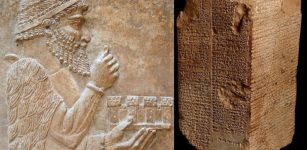 Meskiaggasher: Legendary Founder Of The First Dynasty Of Uruk Who ‘Entered The Sea And Disappeared’
Featured Stories | Apr 20, 2021
Meskiaggasher: Legendary Founder Of The First Dynasty Of Uruk Who ‘Entered The Sea And Disappeared’
Featured Stories | Apr 20, 2021 -
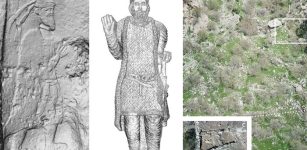 Mysterious 2,000-Year-Old Lost City Of Natounia May Have Been Found!
Archaeology | Jul 20, 2022
Mysterious 2,000-Year-Old Lost City Of Natounia May Have Been Found!
Archaeology | Jul 20, 2022 -
 What Were The Strange Objects Biblical Adam Received From Divine Beings?
Biblical Mysteries | Jul 13, 2020
What Were The Strange Objects Biblical Adam Received From Divine Beings?
Biblical Mysteries | Jul 13, 2020 -
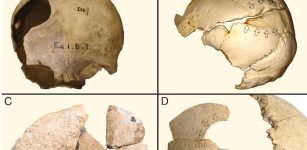 Violence Was Widespread In Early Farming Society – New Study
Archaeology | Jan 23, 2023
Violence Was Widespread In Early Farming Society – New Study
Archaeology | Jan 23, 2023 -
 Taíno Indians Are Not Extinct – Ancient Tooth Reveals Indigenous Americans Still Have Living Descendants In The Caribbean
Archaeology | Feb 21, 2018
Taíno Indians Are Not Extinct – Ancient Tooth Reveals Indigenous Americans Still Have Living Descendants In The Caribbean
Archaeology | Feb 21, 2018 -
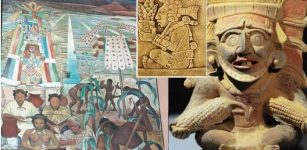 Yum Kaax, Mayan God Of Agriculture, Lord Of Woods And Caretaker Of Animals
Featured Stories | Jul 15, 2020
Yum Kaax, Mayan God Of Agriculture, Lord Of Woods And Caretaker Of Animals
Featured Stories | Jul 15, 2020 -
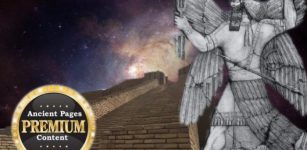 Mysterious Sumerian Star Tablet And Strange Divine Omens – Sacred Knowledge Of The Gods – Part 1
Featured Stories | Feb 14, 2021
Mysterious Sumerian Star Tablet And Strange Divine Omens – Sacred Knowledge Of The Gods – Part 1
Featured Stories | Feb 14, 2021 -
 Underground Catacombs Of Alexandria: Ancient Time Capsule Which Remained Hidden For Almost Two Millennia
Featured Stories | Sep 20, 2016
Underground Catacombs Of Alexandria: Ancient Time Capsule Which Remained Hidden For Almost Two Millennia
Featured Stories | Sep 20, 2016 -
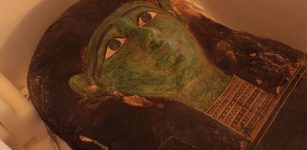 Looted Green Coffin Of Ancient Egyptian Priest Returned To Egypt From US
Archaeology | Jan 2, 2023
Looted Green Coffin Of Ancient Egyptian Priest Returned To Egypt From US
Archaeology | Jan 2, 2023 -
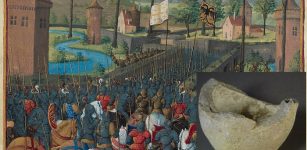 Ancient Hand Grenades: Explosive Weapons In Medieval Jerusalem During Crusades
Archaeology | Apr 26, 2022
Ancient Hand Grenades: Explosive Weapons In Medieval Jerusalem During Crusades
Archaeology | Apr 26, 2022 -
 Beautiful 2,300-Year-Old Gold Ring Found In The City Of David
Archaeology | May 30, 2024
Beautiful 2,300-Year-Old Gold Ring Found In The City Of David
Archaeology | May 30, 2024 -
 Saptarishi – Seven Sages Who Guided Humanity During Four Great Ages
Featured Stories | Apr 2, 2019
Saptarishi – Seven Sages Who Guided Humanity During Four Great Ages
Featured Stories | Apr 2, 2019 -
 Day Of The Dead: From Aztec Goddess Worship To Modern Mexican Celebration
Ancient Traditions And Customs | Oct 30, 2019
Day Of The Dead: From Aztec Goddess Worship To Modern Mexican Celebration
Ancient Traditions And Customs | Oct 30, 2019 -
 On This Day In History: Dryburgh Abbey One Of Most Beautiful Of All Border Abbeys Of Scotland Founded – On Nov 10, 1150
News | Nov 10, 2016
On This Day In History: Dryburgh Abbey One Of Most Beautiful Of All Border Abbeys Of Scotland Founded – On Nov 10, 1150
News | Nov 10, 2016 -
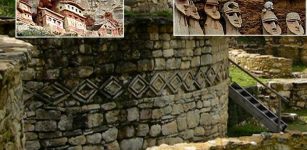 Mysterious Chachapoyas ‘Warriors Of The Clouds’ And Their Impressive Structures
Civilizations | Nov 4, 2020
Mysterious Chachapoyas ‘Warriors Of The Clouds’ And Their Impressive Structures
Civilizations | Nov 4, 2020 -
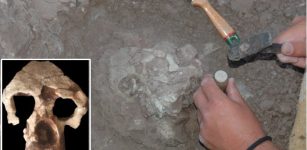 New Fossil Ape Challenges The Story Of Human Evolution
Evolution | Aug 24, 2023
New Fossil Ape Challenges The Story Of Human Evolution
Evolution | Aug 24, 2023 -
 Advanced Technology Of The Ancients: Artificial Platforms Of Mighty Nan Madol
Civilizations | Sep 14, 2018
Advanced Technology Of The Ancients: Artificial Platforms Of Mighty Nan Madol
Civilizations | Sep 14, 2018 -
 Young Boy Finds Baffling Artifacts In New Mexico Predating The Anasazi, The ‘Ancient Ones’
Featured Stories | Aug 6, 2024
Young Boy Finds Baffling Artifacts In New Mexico Predating The Anasazi, The ‘Ancient Ones’
Featured Stories | Aug 6, 2024 -
 First Genome-Wide Ancient Human DNA From Sudan Shines New Light On Nile Valley Past
Archaeology | Dec 20, 2021
First Genome-Wide Ancient Human DNA From Sudan Shines New Light On Nile Valley Past
Archaeology | Dec 20, 2021 -
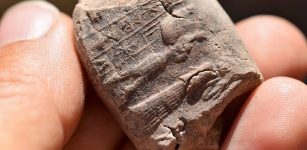 Old Babylonian Residential Building In Ur Dated To 1835 BC – Investigated
Archaeology | Jul 24, 2019
Old Babylonian Residential Building In Ur Dated To 1835 BC – Investigated
Archaeology | Jul 24, 2019

